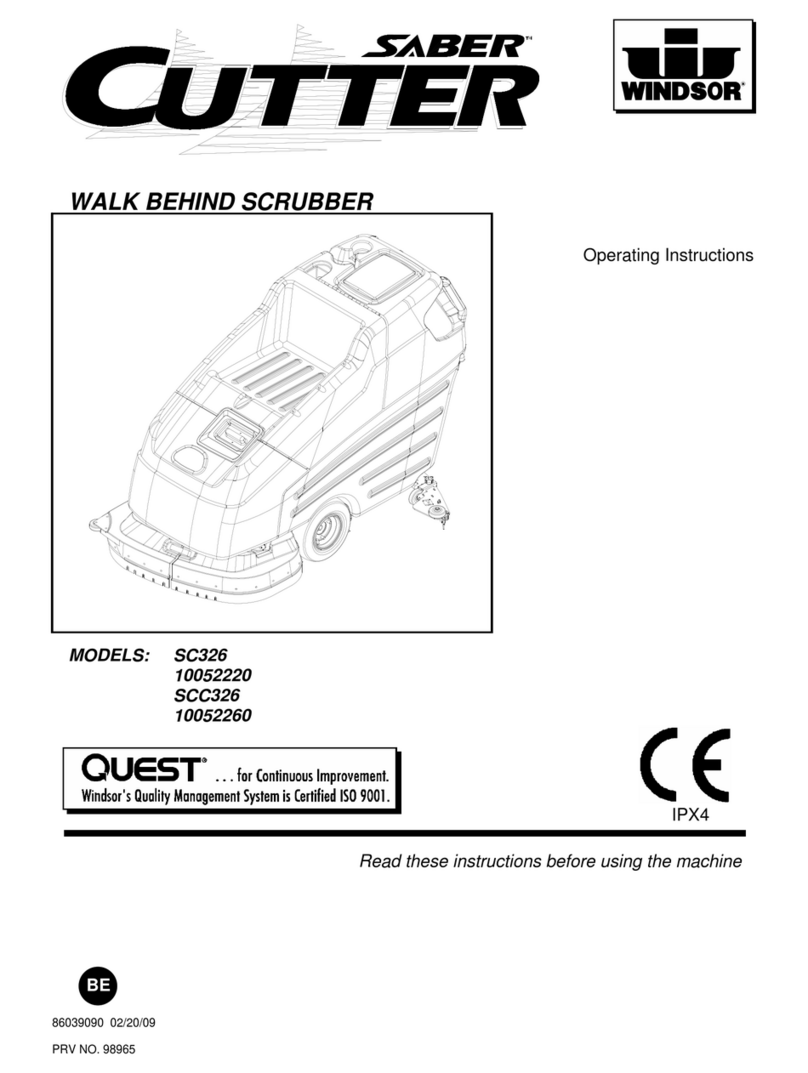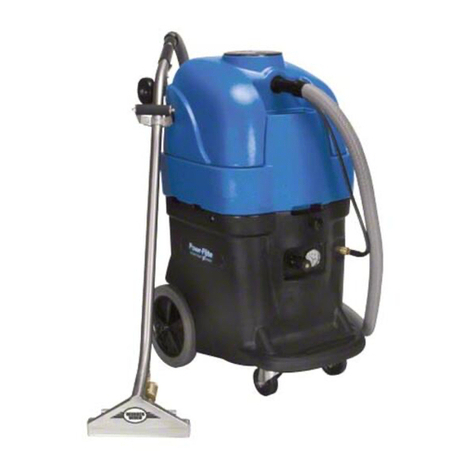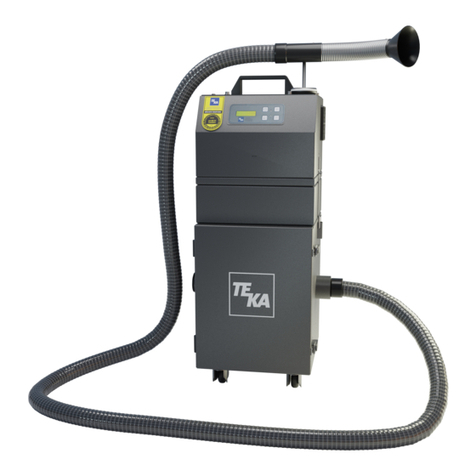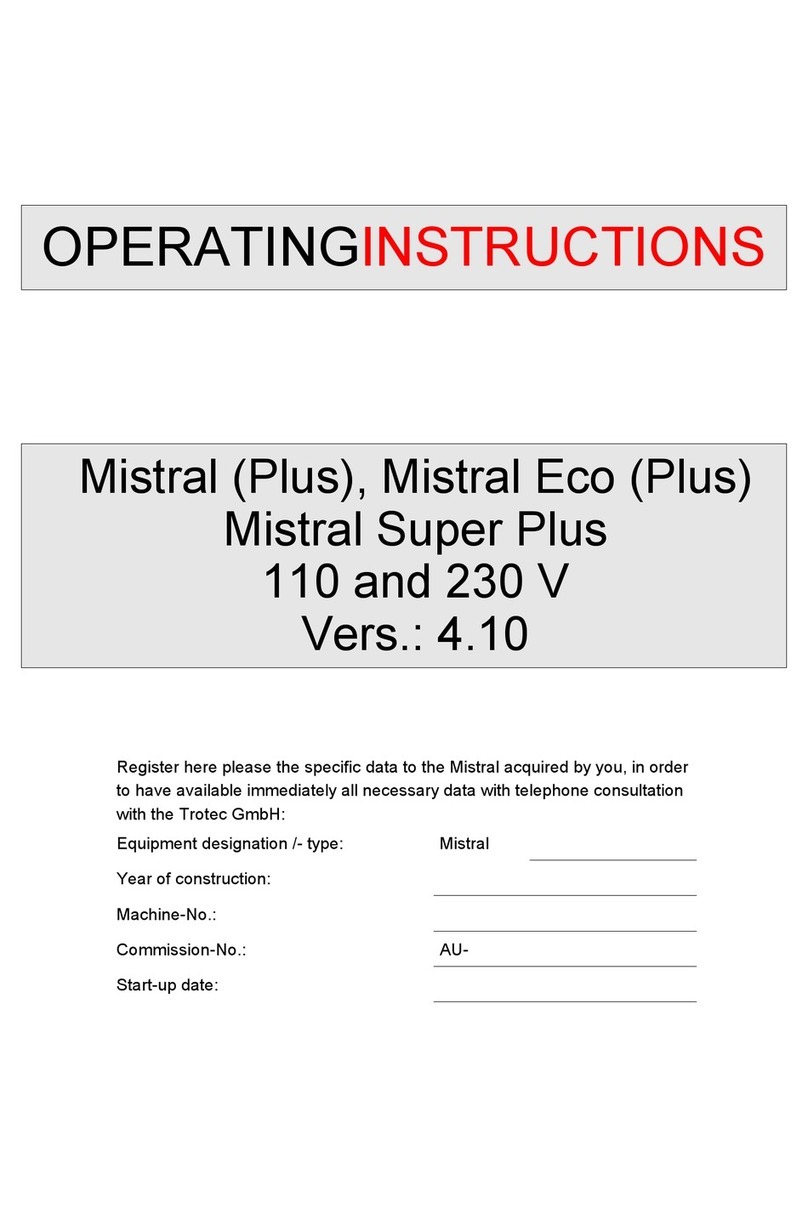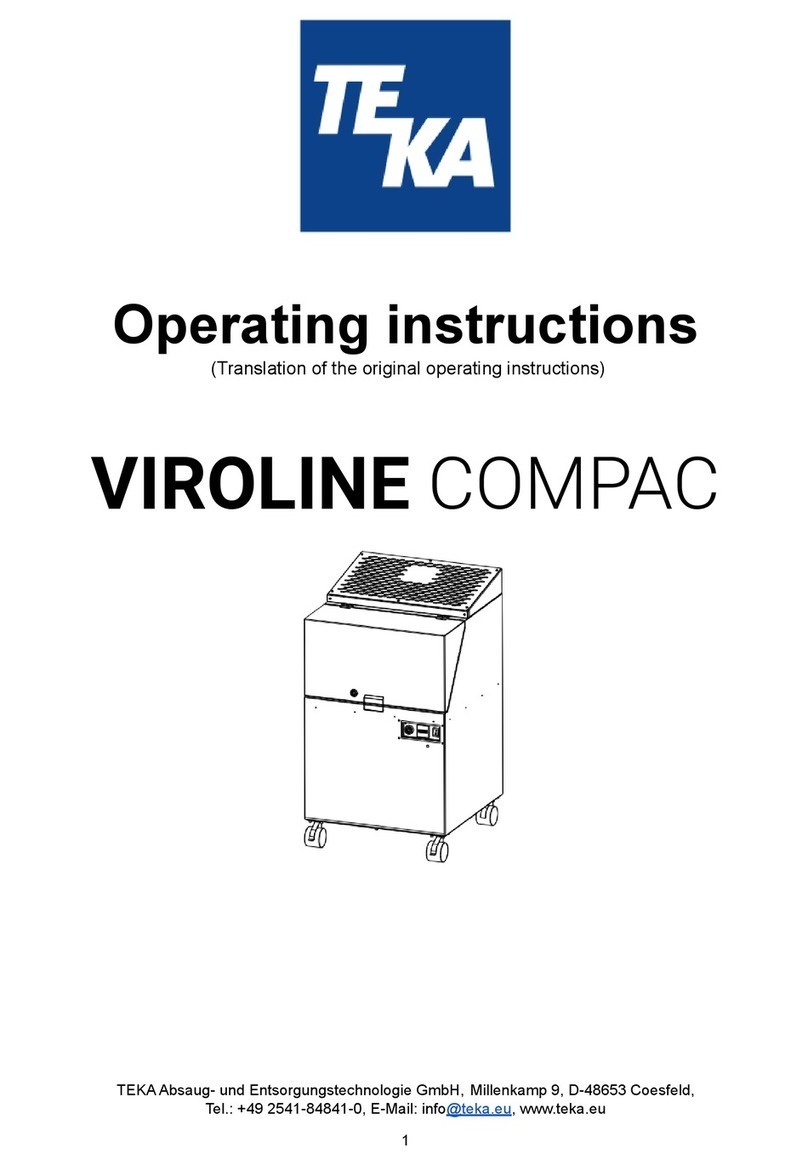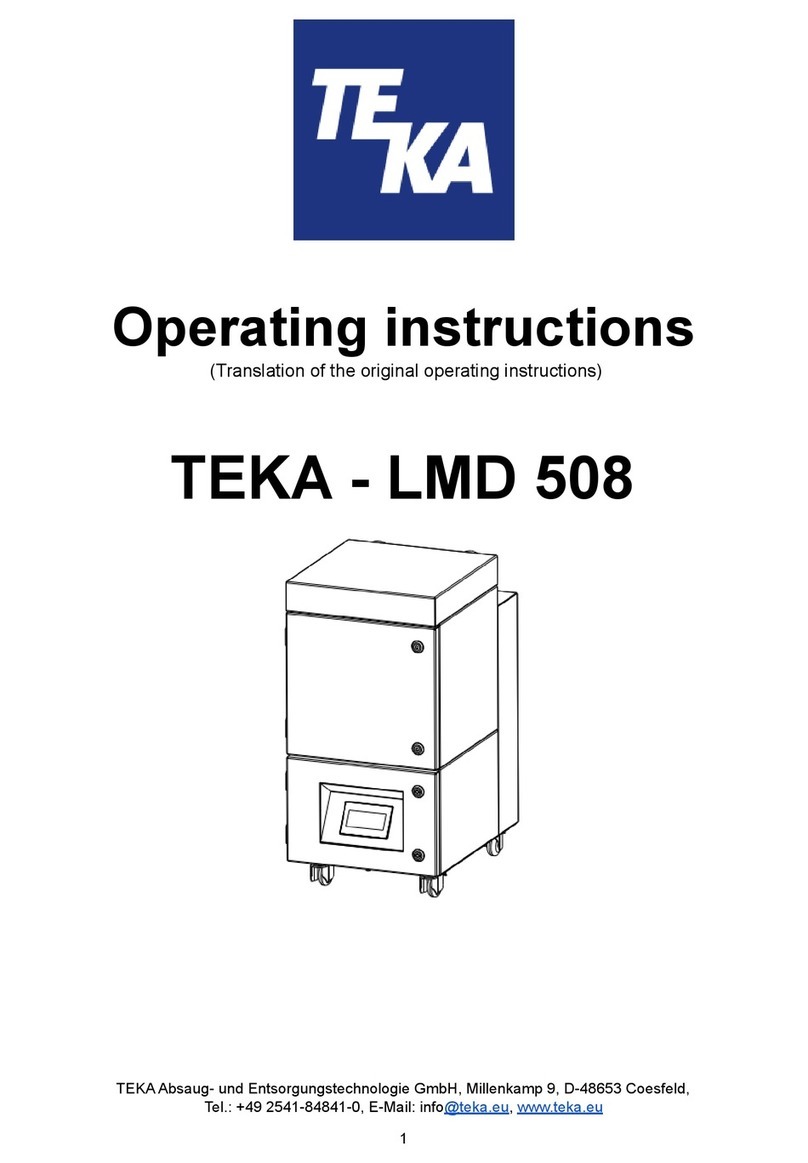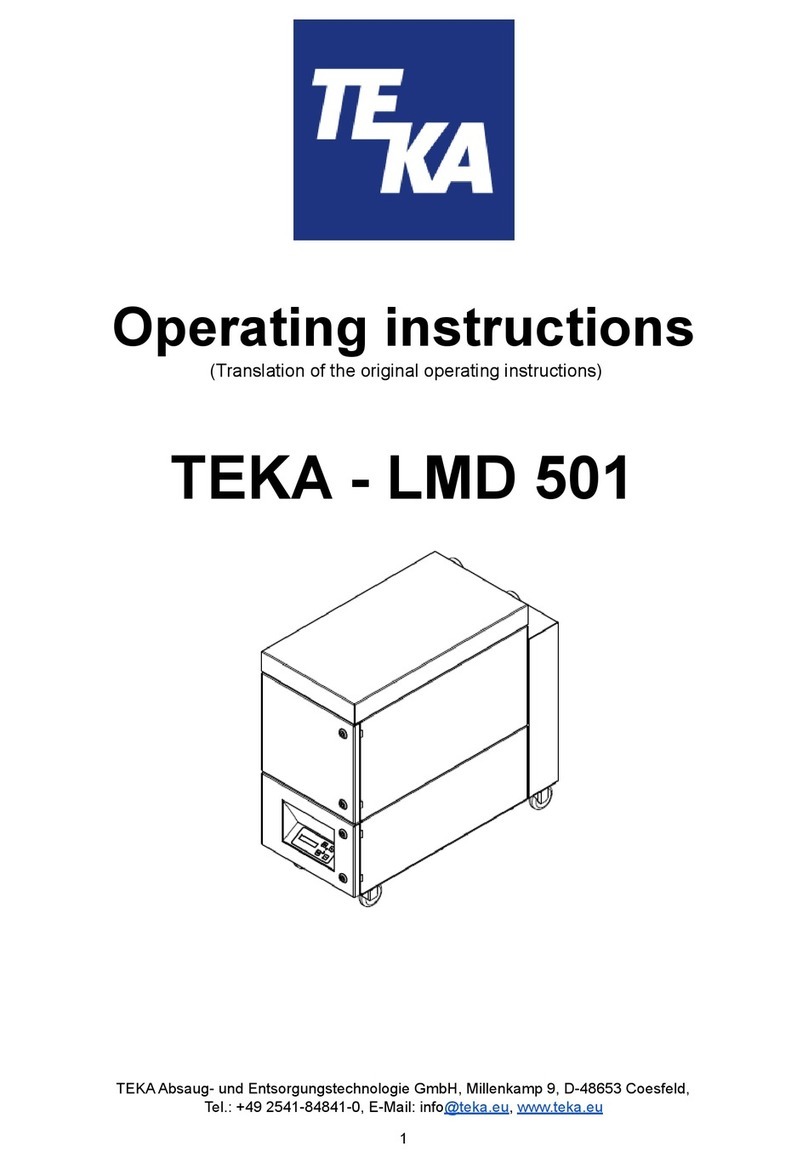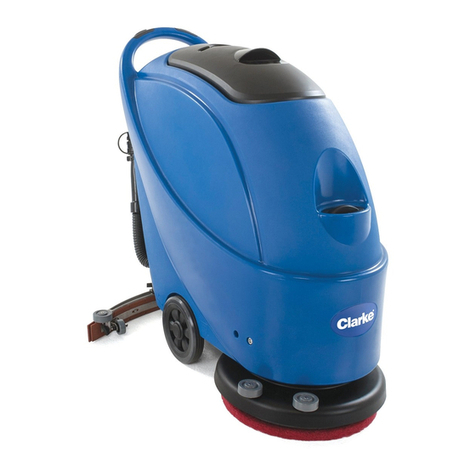
Table of contents
1. General 4
2. Description of the system elements 5
2.1. Illustration of the system elements 5
2.2. Functionality of the system 6
2.3. Intended use 6
3. Safety instructions 7
3.1. Definition of the hazard symbols 7
3.2. General safety instructions 7
4. Storage, transport and installation of the device 8
5. Commissioning 9
5.1. Connecting an extraction element 9
5.2. Electrical connection 9
5.3. Connecting the compressed air supply 10
5.3.1. Compressed air supply for the cleaning of the filter cartridges 10
6. Operating the system 11
6.1. Explanation of the operating elements 11
6.2. Setting the automatic filter cartridge cleaning 12
7. Maintenance 13
7.1. Reset to maintenance state 14
7.2. Cleaning the filter cartridges 14
7.3. Replacing the filter cartridges 15
7.4. Emptying the dust collecting tank 16
7.5. Replacing the carbon brushes 16
8. Dismantling / Disposal 17
9. Diagnostics and troubleshooting 18
10. List of spare parts 18
11. Technical data 19
12. EC declaration of conformity 20
